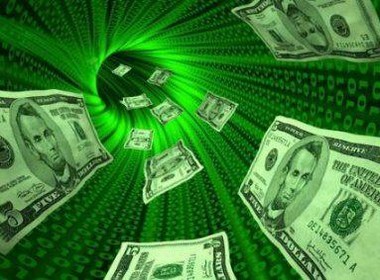- Get link
- X
- Other Apps
The developers of the digital dollar in the United States have started testing the platform on which they plan to launch a virtual American currency in the future. The stated purpose of the tests is to explore the possibility of creating an interoperable platform for digital money.
Testing of the system will last 12 weeks, according to an official statement. The project will be run in a test environment using only simulated data.
Banks such as HBSC, PNC Bank, Truist, US Bank, Wells Fargo, BNY Mellon, Citi, TD Bank, as well as Mastercard and SWIFT payment systems will participate in it. The New York Innovation Center of the Federal Reserve Bank of New York (YIC) cooperates with them.
"NYIC looks forward to working with members of the banking community to advance research into asset tokenization and future financial market infrastructure in the US as money and banking evolve," Per von Zelowitz, director of the New York Innovation Center at the Federal Reserve Bank of New York, was quoted as saying. .
It is noted that the project is not intended to promote any political decisions and is not a signal of the Fed's readiness to "mandatory development and issuance of a state digital currency."
Test participants will issue simulated digital tokens representing customer deposits and make settlements using simulated central bank reserves on a shared blockchain. Such tokens are interchangeable and can be exchanged for other forms of money.
The trials will be conducted in compliance with the regulatory framework and existing rules, including KYC ("know your customer") and anti-money laundering (AML) requirements.
Potentially, in the future, this concept can be extended to multi-currency operations and regulated stablecoins (stable cryptocurrencies). But at the same time, the participants of the tests refused to undertake obligations regarding the further stages of the introduction of the crypto-dollar.
A digital dollar is unlikely to appear before 2027. According to the Vice Chairman of the US Federal Reserve System, Lael Brainard, it will take at least five years to implement the necessary security measures.
Testing of the system will last 12 weeks, according to an official statement. The project will be run in a test environment using only simulated data.
Banks such as HBSC, PNC Bank, Truist, US Bank, Wells Fargo, BNY Mellon, Citi, TD Bank, as well as Mastercard and SWIFT payment systems will participate in it. The New York Innovation Center of the Federal Reserve Bank of New York (YIC) cooperates with them.
"NYIC looks forward to working with members of the banking community to advance research into asset tokenization and future financial market infrastructure in the US as money and banking evolve," Per von Zelowitz, director of the New York Innovation Center at the Federal Reserve Bank of New York, was quoted as saying. .
It is noted that the project is not intended to promote any political decisions and is not a signal of the Fed's readiness to "mandatory development and issuance of a state digital currency."
Test participants will issue simulated digital tokens representing customer deposits and make settlements using simulated central bank reserves on a shared blockchain. Such tokens are interchangeable and can be exchanged for other forms of money.
The trials will be conducted in compliance with the regulatory framework and existing rules, including KYC ("know your customer") and anti-money laundering (AML) requirements.
Potentially, in the future, this concept can be extended to multi-currency operations and regulated stablecoins (stable cryptocurrencies). But at the same time, the participants of the tests refused to undertake obligations regarding the further stages of the introduction of the crypto-dollar.
A digital dollar is unlikely to appear before 2027. According to the Vice Chairman of the US Federal Reserve System, Lael Brainard, it will take at least five years to implement the necessary security measures.
